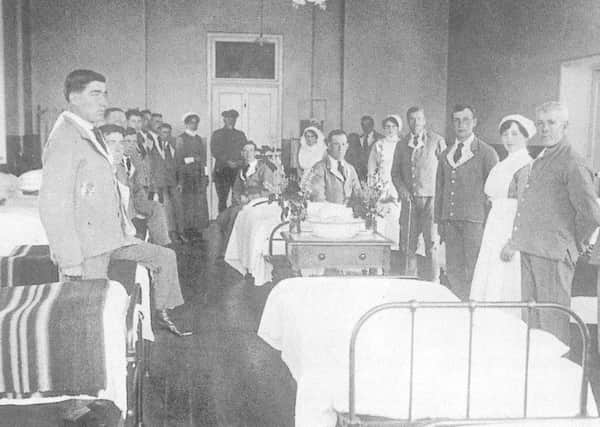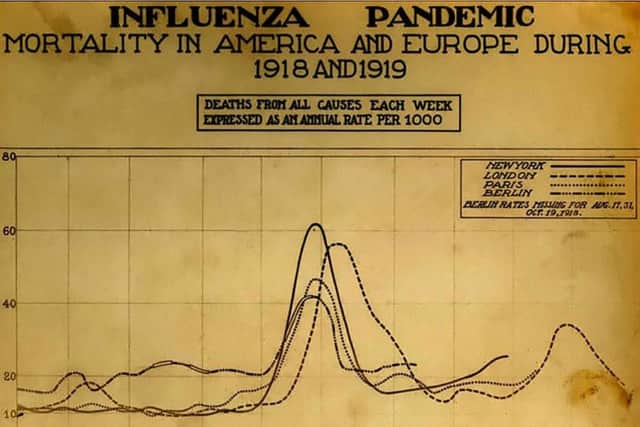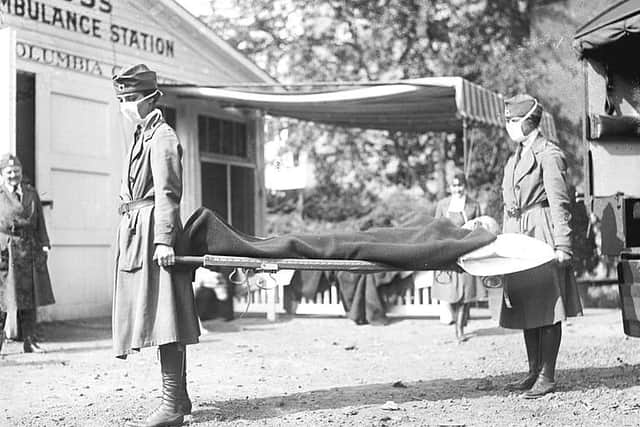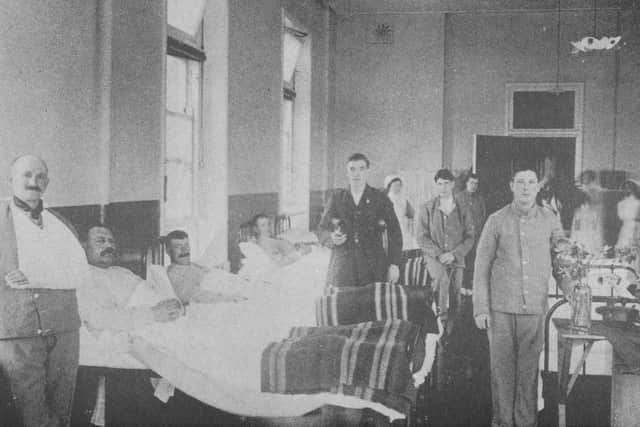Worldwide influenza pandemic shrouded Ireland with post-war sickness and death


One of the most distressing themes to emerge from the letters and emails is the influenza pandemic that rampaged across the front lines, the home-front and around the world, causing a much greater toll of pain and death than The Great War itself.
Regular Roamer-contributor Selwyn Johnston, originally from Enniskillen and closely involved with the town’s forthcoming centenary commemorations, shares some details here today about the horrific pandemic brought home by soldiers at the end of First World War, and then spread through a community already traumatised and weakened by tragedy and wartime deprivation.
Advertisement
Hide AdAdvertisement
Hide AdSir William J Thompson MD from Cavanaleck, Co Tyrone, was Registrar-General of Ireland from 1909 and president of the Statistical and Social Inquiry Society of Ireland.


He delivered his president’s address which was published in the society’s journal in November 1919, a year after war ended.
Sir William’s opening words, vivid if sombre, described the appalling, virus-borne catastrophe that was enshrouding the Emerald Isle with illness, death and sadness.
“Since the period of the Great Famine with its awful attendant horrors of fever and cholera,” he began, “no disease of an epidemic nature created so much havoc in any one year in Ireland as Influenza in 1918.”
Advertisement
Hide AdAdvertisement
Hide AdSir William then advanced on his virtually inconceivable statistics.


“During that year, out of a total of 78,695 deaths from all causes registered, no less than 10,651 deaths, or 13.5 per cent, were ascribed to this cause. Stated in terms of the population, it would appear that the 10,651 deaths from influenza are equivalent to 243 per 100,000 inhabitants.”
Sir William added a tragic qualification to his findings.
“Furthermore, deaths from pneumonia, which numbered 4,111 in 1917, rose to 6,120 in 1918, showing an increase of 2,009 deaths, and as pneumonia was closely associated with the epidemic of influenza, it may, I think, be fairly assumed that an appreciable number of deaths in 1918 classified to pneumonia were in reality cases of influenza.”
So if many or most of the pneumonia cases were actually influenza, as suggested by Sir William, Roamer’s (shaky!) mathematics puts the full tally of flu deaths in 1918 at anything up to or over 16,000.


Advertisement
Hide AdAdvertisement
Hide Ad“The distribution of the deaths from pneumonia in 1918,” continued Sir William, “follows a markedly different course and is much more in line with the influenza figures for that year, thus affording further evidence in support of the view that many of the deaths returned as from pneumonia were in reality deaths from influenza.”
The Registrar-General’s statistics showing “the number of deaths from influenza registered in Ireland during each of the fifty-five years from 1864-1918” revealed a massive burgeoning from 311 deaths in 1864 to 10,651 in 1918.
The lowest number of flu deaths was 21 in 1889, and the second highest prior to 1918 was an epidemic in 1900 that took the lives of 4,677 Irish people.
Sir William analysed the figures and made comparisons.
“In 1900, the number of deaths registered as from influenza was 4,677, or 105 in every 100,000 of the population, being the highest annual mortality from this cause recorded for Ireland in the years preceding 1918; but, as will be observed, this mortality is far below that recorded for last year.”
Advertisement
Hide AdAdvertisement
Hide AdHe proceeded to show the highest mortality rates from other epidemics down the years “as compared with that from influenza in 1918.”
An epidemic of fever in 1898 caused 1,284 deaths and typhus in 1880 brought 934 deaths.
In an outbreak of small-pox in 1872 there were 3,248 deaths and 2,212 died of measles in 1878.
The casualty figure for an epidemic of scarlet fever in 1874 was 4,034; there were 2,380 deaths from whooping-cough in 1868 and 565 from diphtheria in 1874.
Advertisement
Hide AdAdvertisement
Hide Ad“The highest mortality, apart from influenza, shown in the figures,” said Sir William “was 4,034 deaths from scarlet fever (smallpox following with 3,248 deaths), which is far below that recorded for influenza.”
The illness was nicknamed the ‘Spanish lady’ or ‘Spanish flu’ because it was first recorded in Spain though Spanish folk dubbed the disease the ‘Naples soldier’.
British and Irish soldiers called it ‘Flanders grippe’, the Japanese called it ‘American influenza’ and German troops named it ‘Blitzkatarrh’.
It shook the world with a relentless, unforgiving and indiscriminate ferocity, mercilessly ravaging the globe beyond 1918.
Between 50 to 100 million people died.
Some 800,000 people in Ireland caught it, and 23,000 died.
A dancer dropped dead on a Belfast stage.
Advertisement
Hide AdAdvertisement
Hide AdAround 130 tram workers succumbed to the flu in Dublin where the service virtually ground to a halt.
In Enniskillen it was reported that Catholics were more susceptible than Protestants because their more regular churchgoing spread the disease.
Over 1,500 died of influenza in Belfast and another 1,000 of pneumonia in 1918.
Around 150 died of flu and nearly 300 of pneumonia in Londonderry in the same year.
Advertisement
Hide AdAdvertisement
Hide Ad“In the Fivemiletown district there have been many deaths,” stated one of Selwyn Johnston’s cuttings “with as many as two deaths in the one family taking place.”
There’ll be more of Mr Johnston’s findings on this page soon, including century-old reports that “the influenza epidemic left the Enniskillen Workhouse in a state of chaos. Corpses lay for three days unburied”.